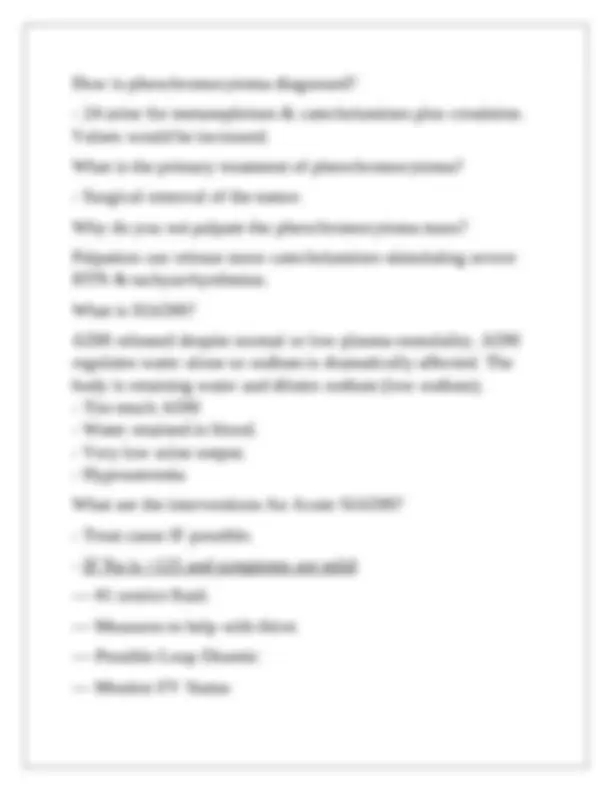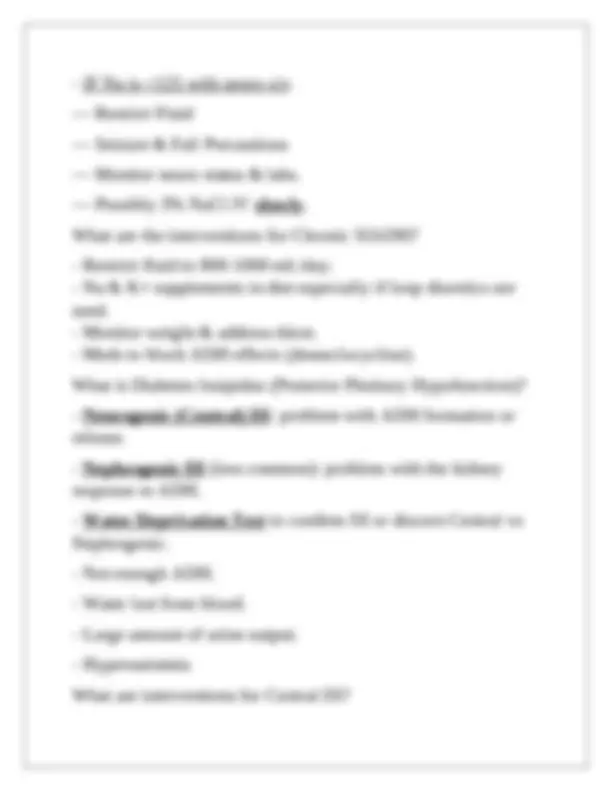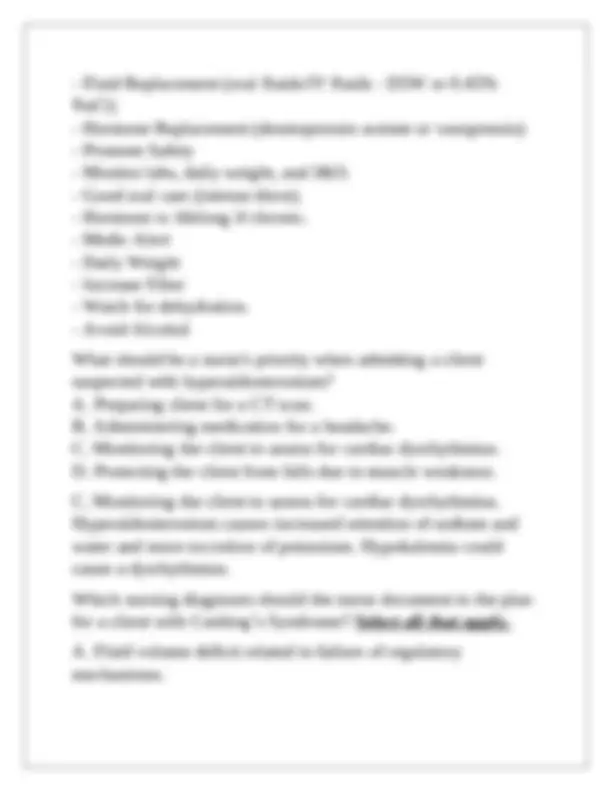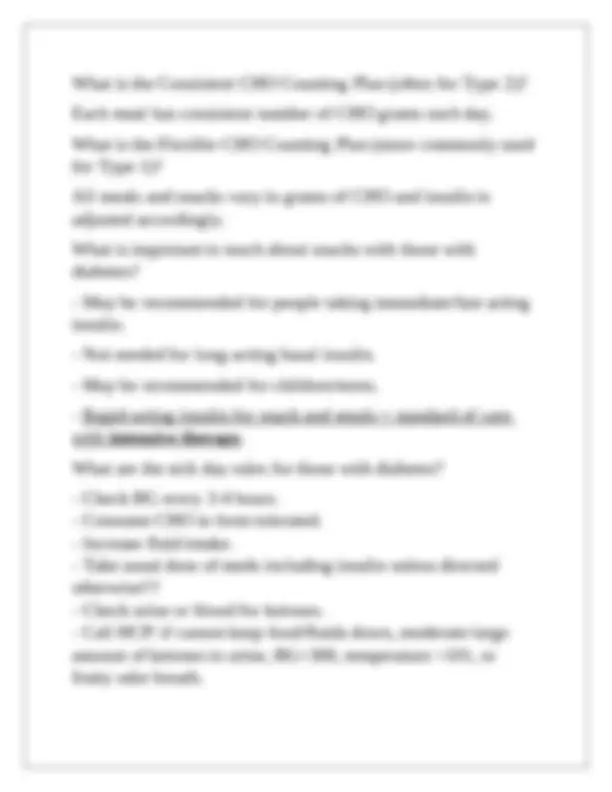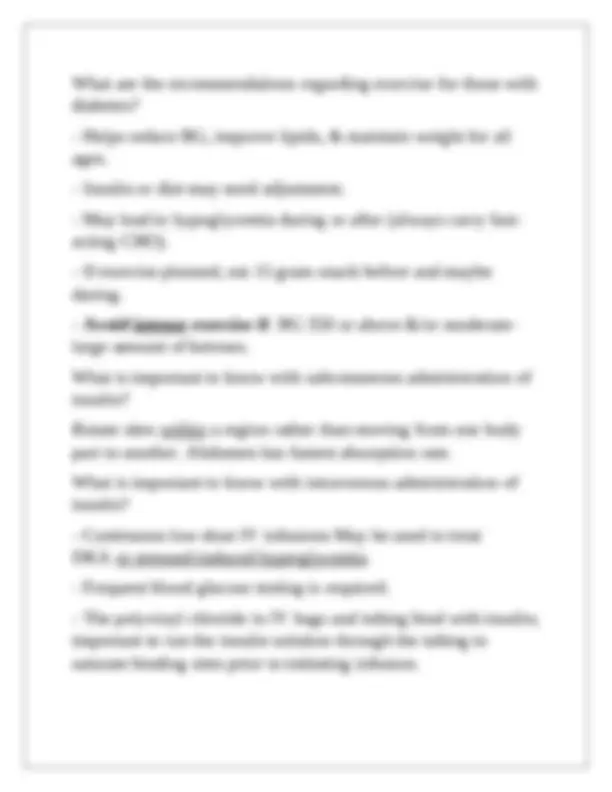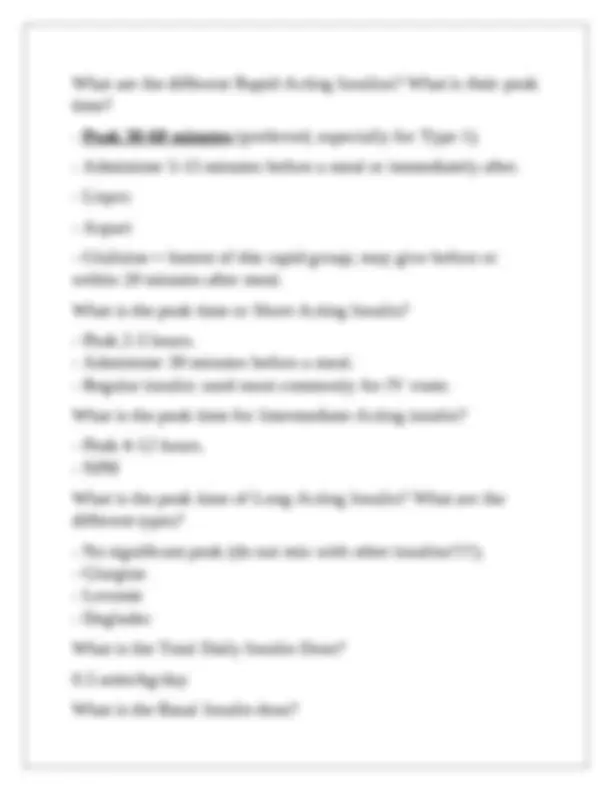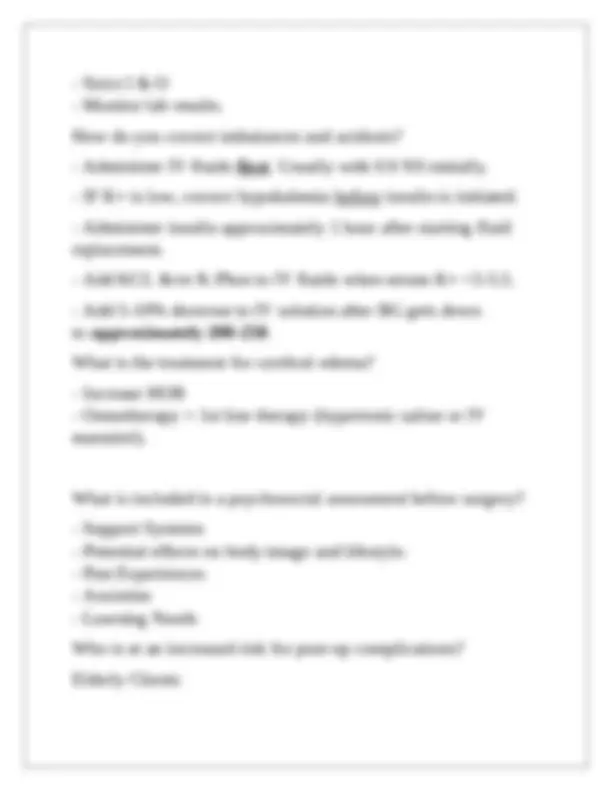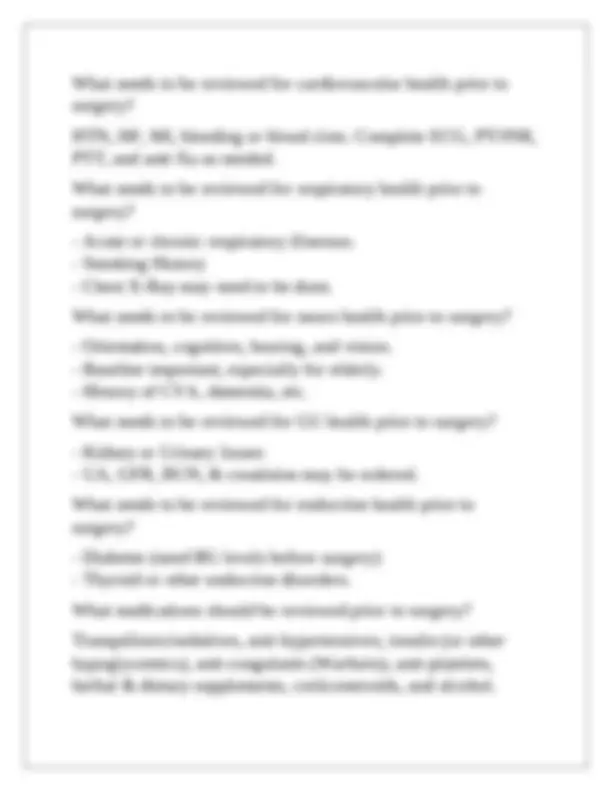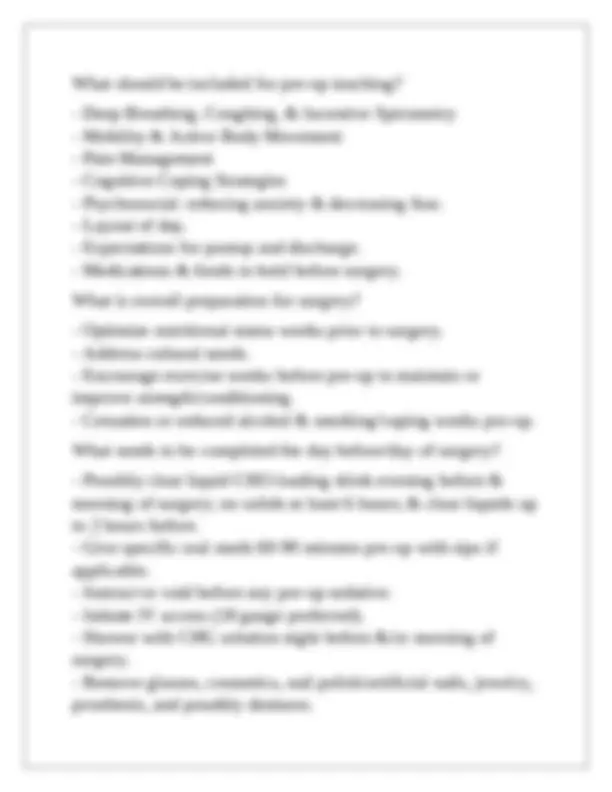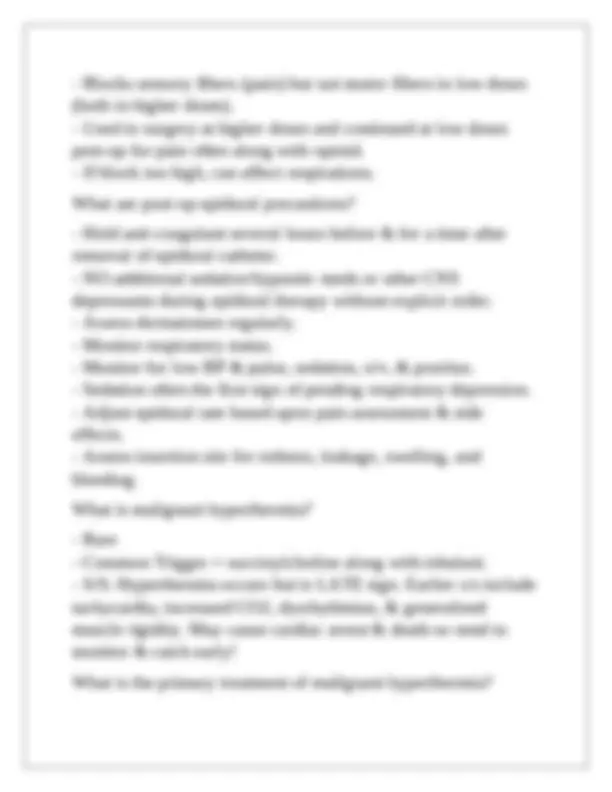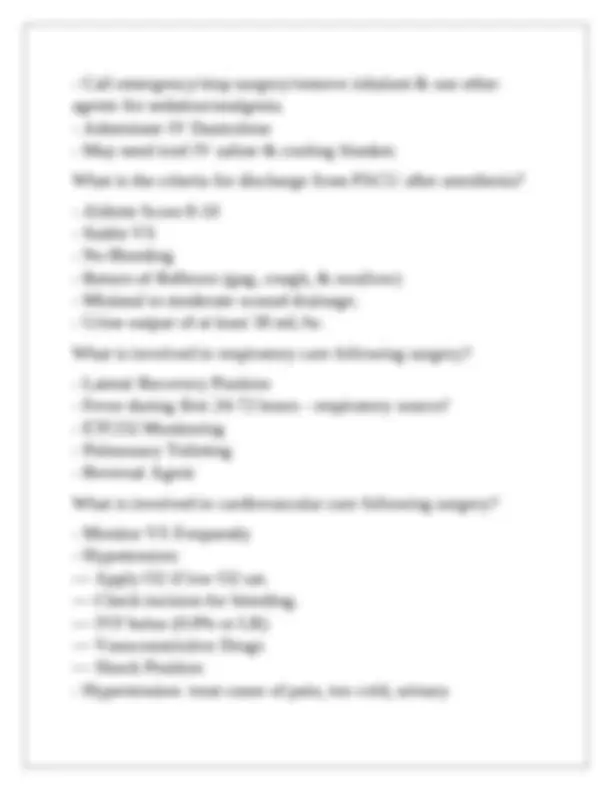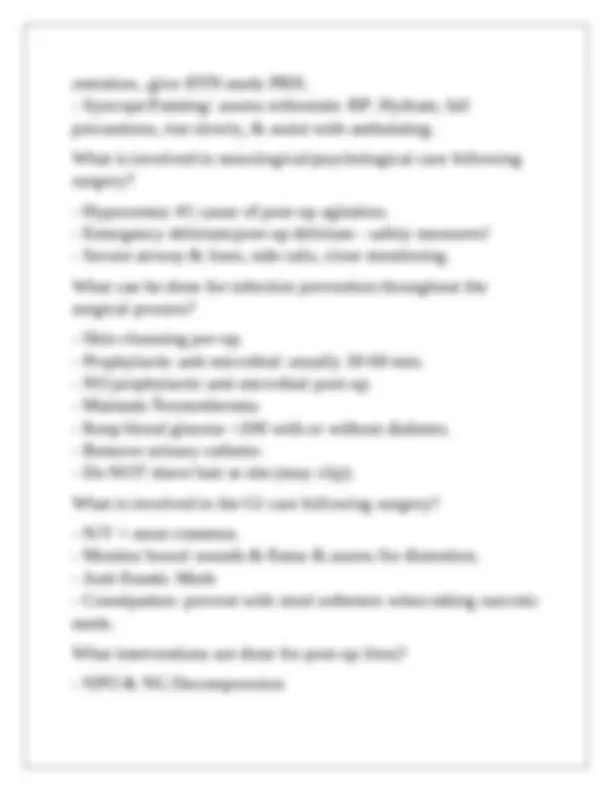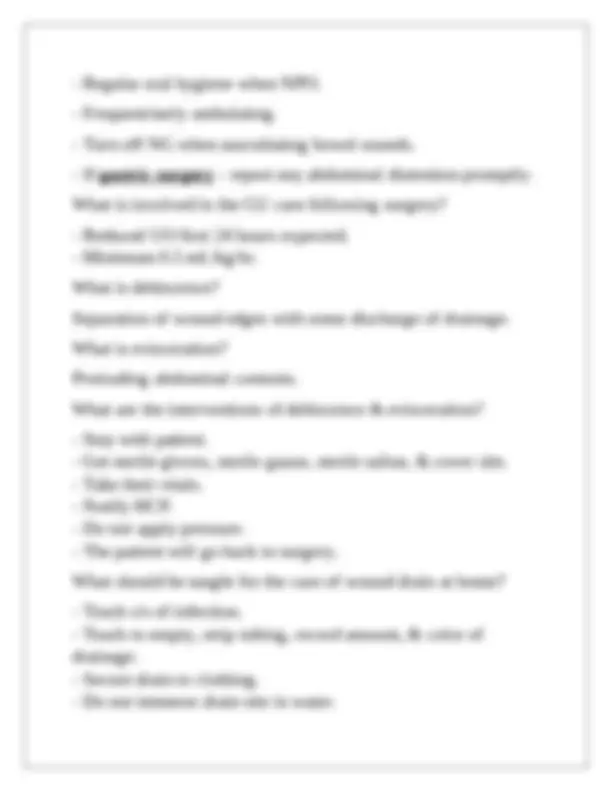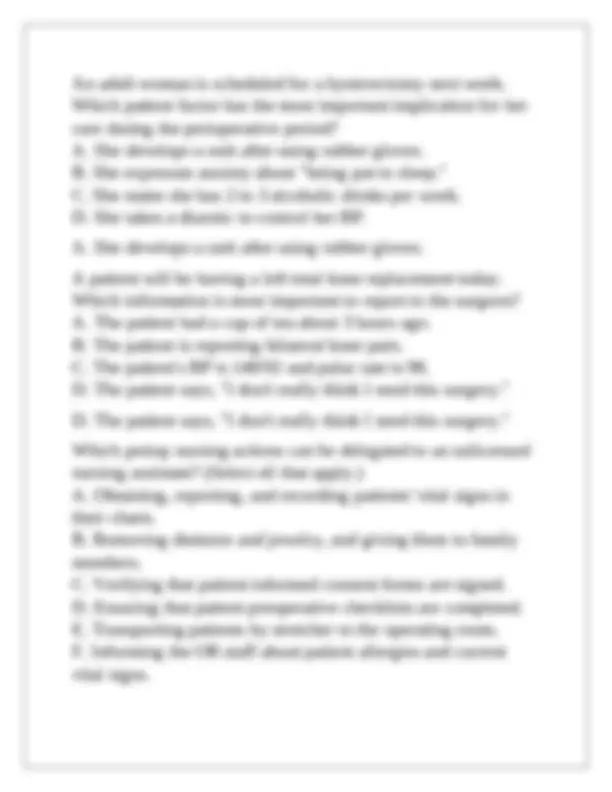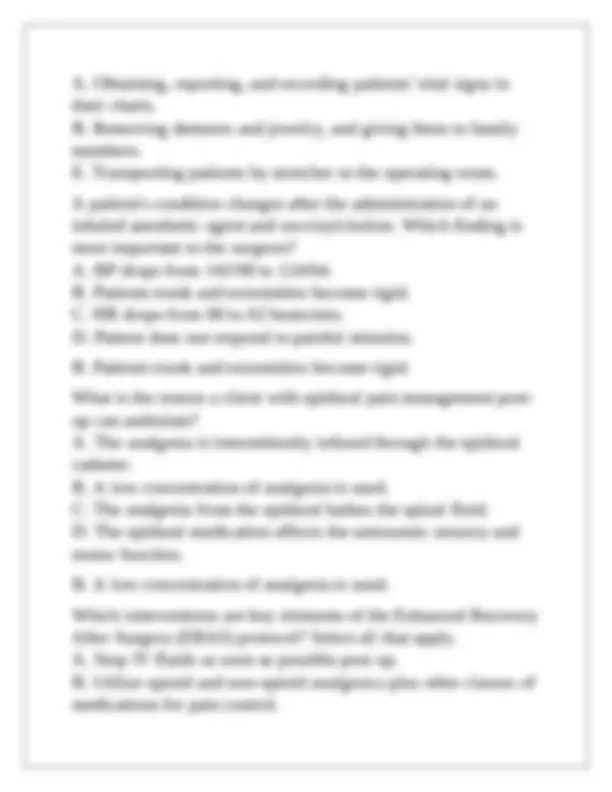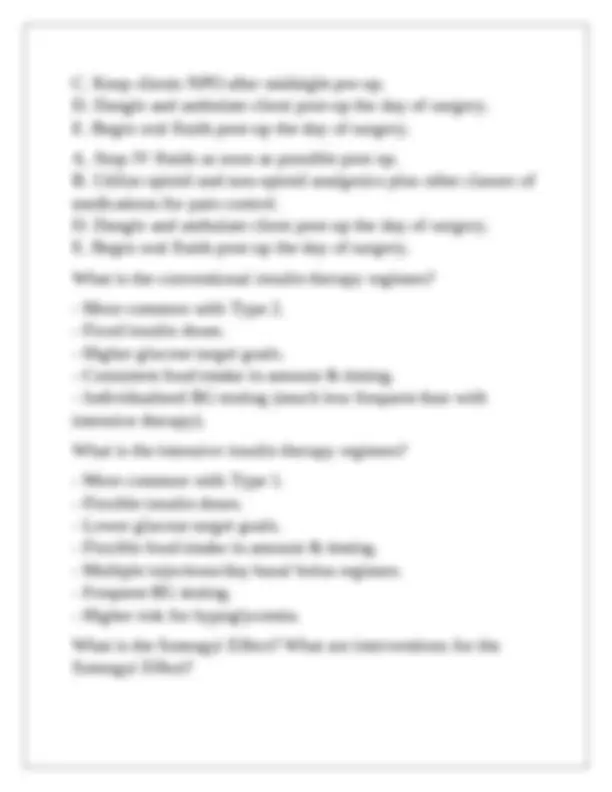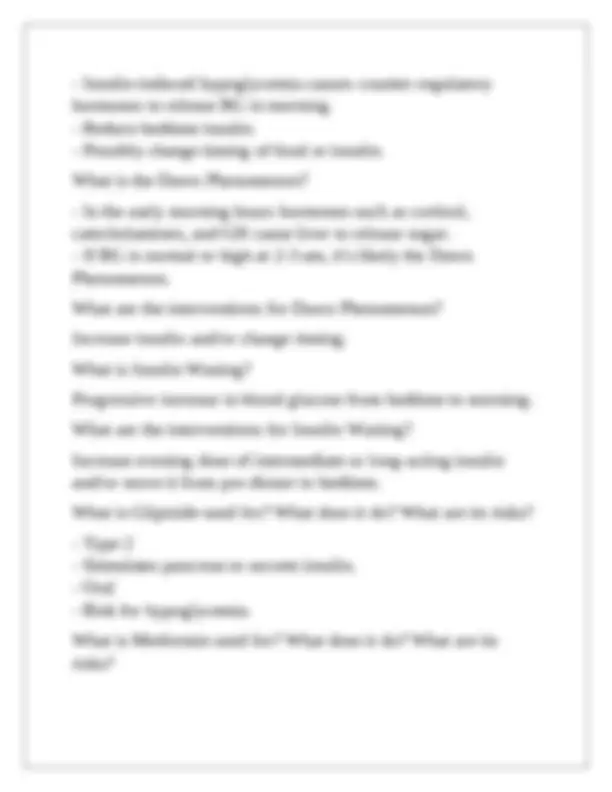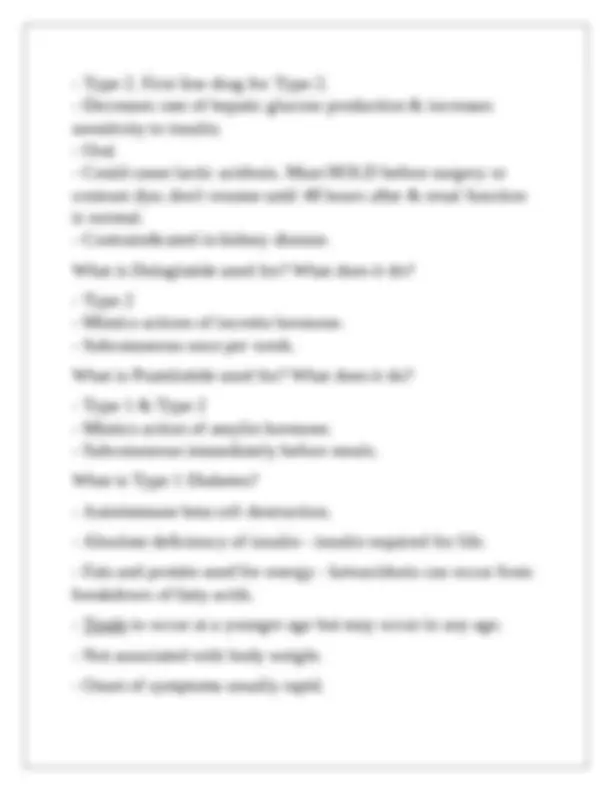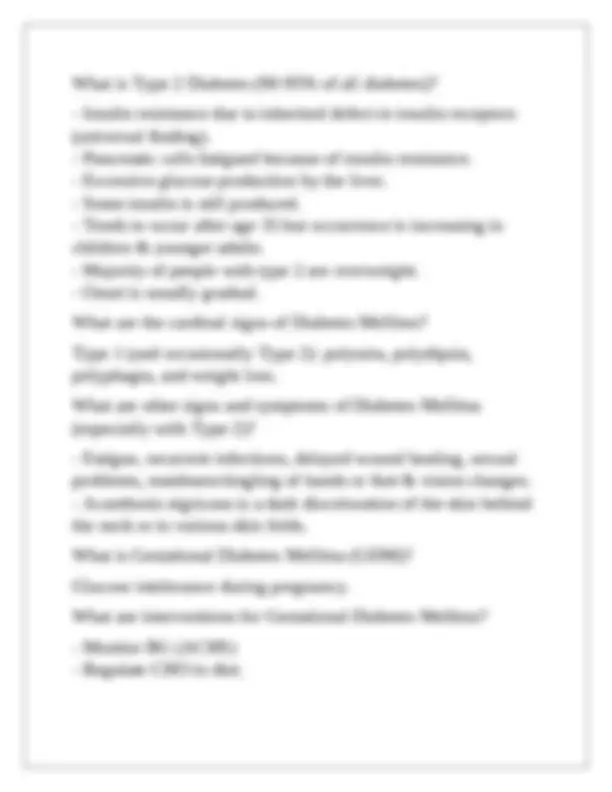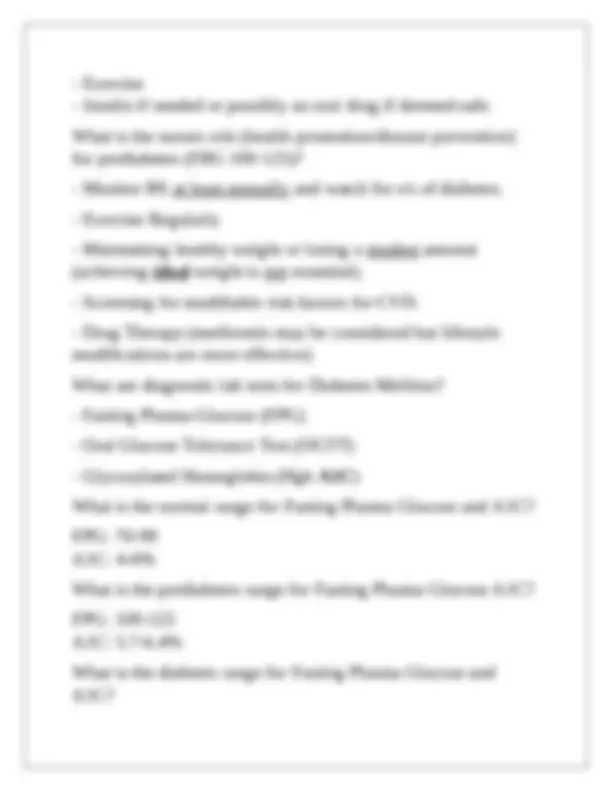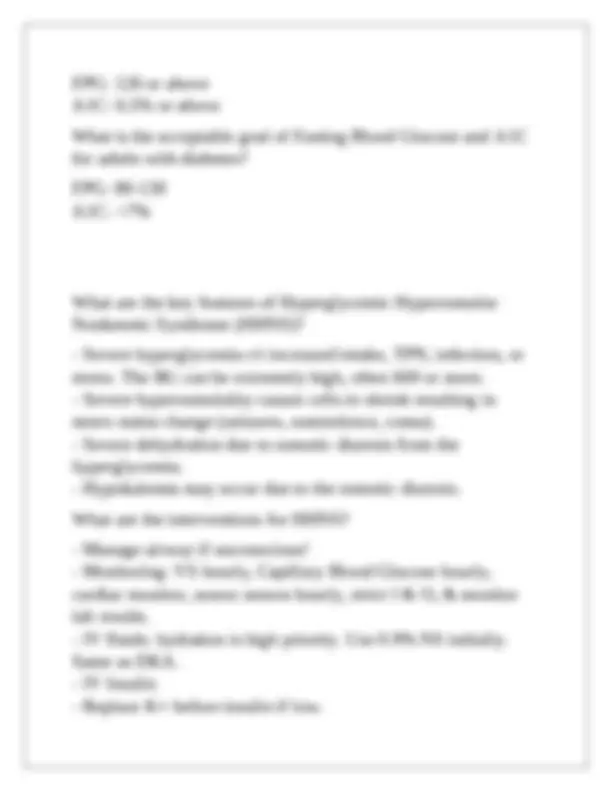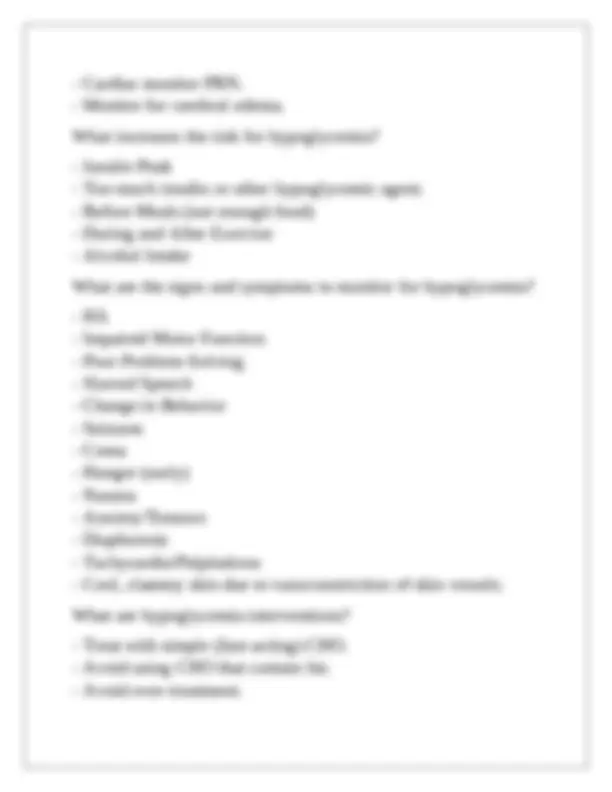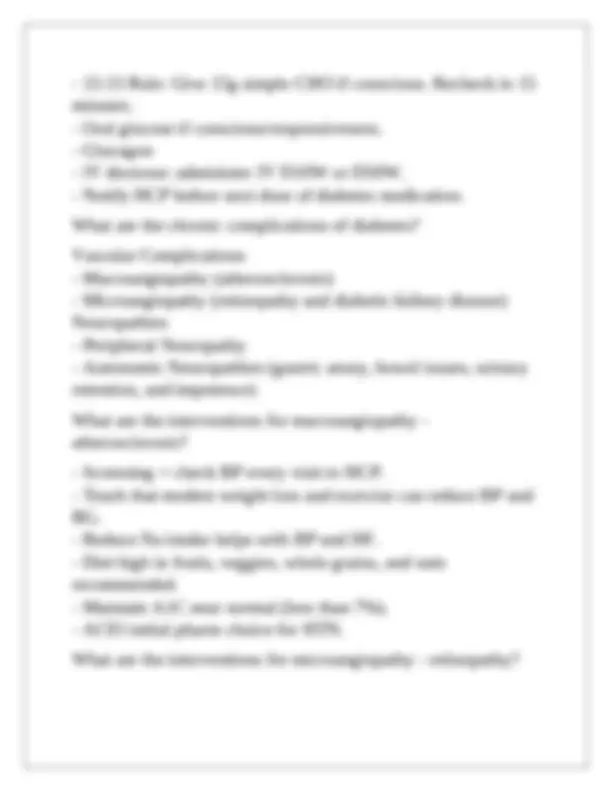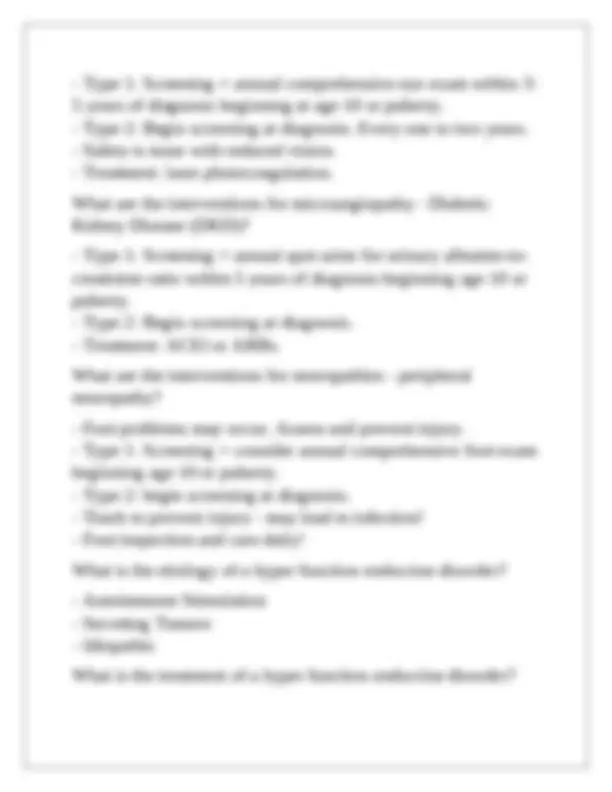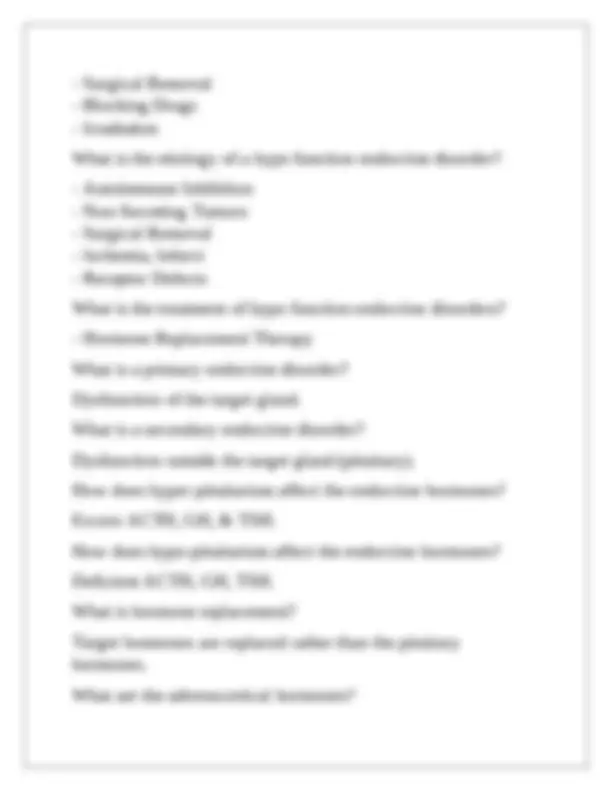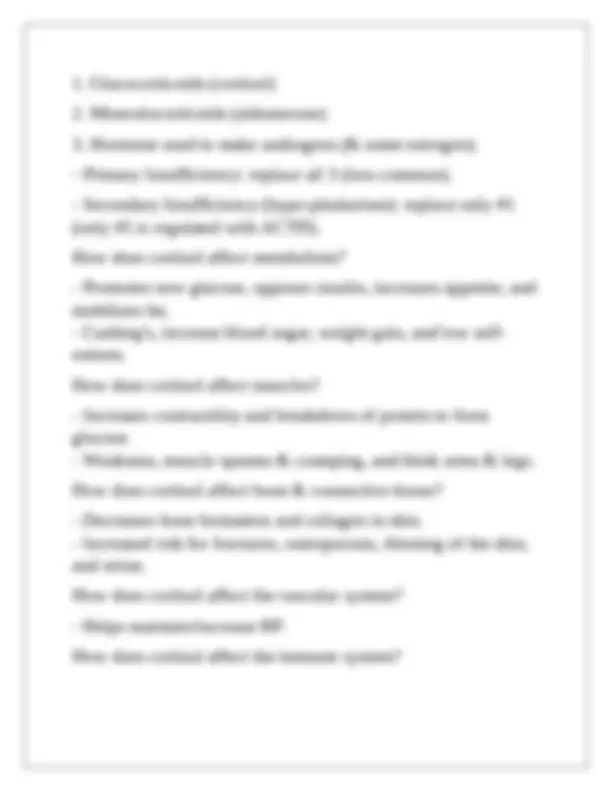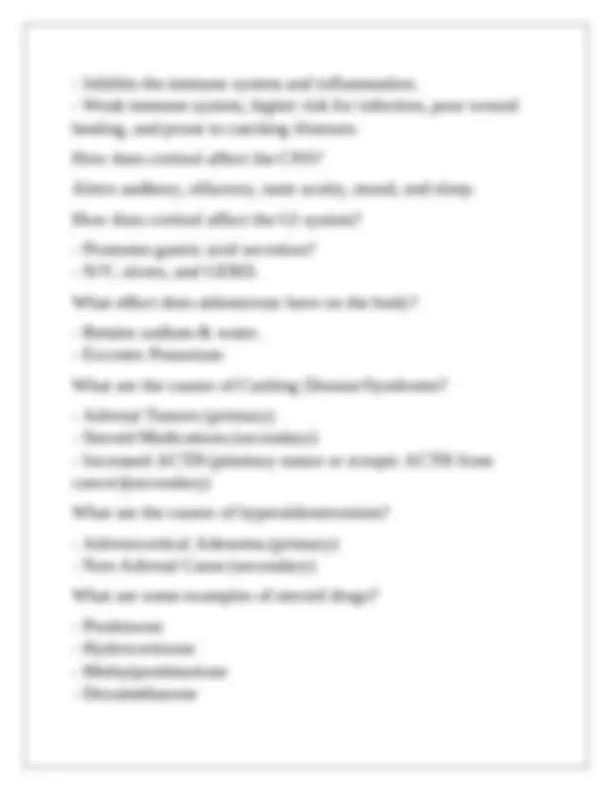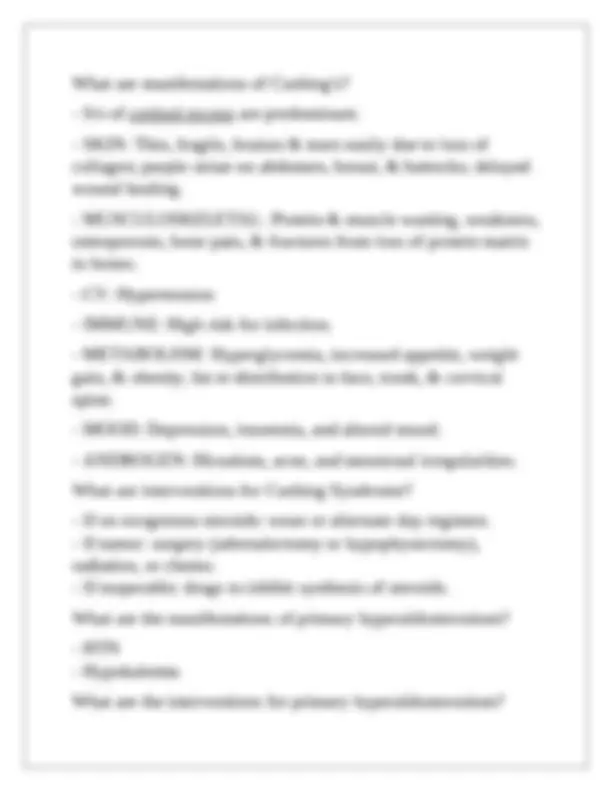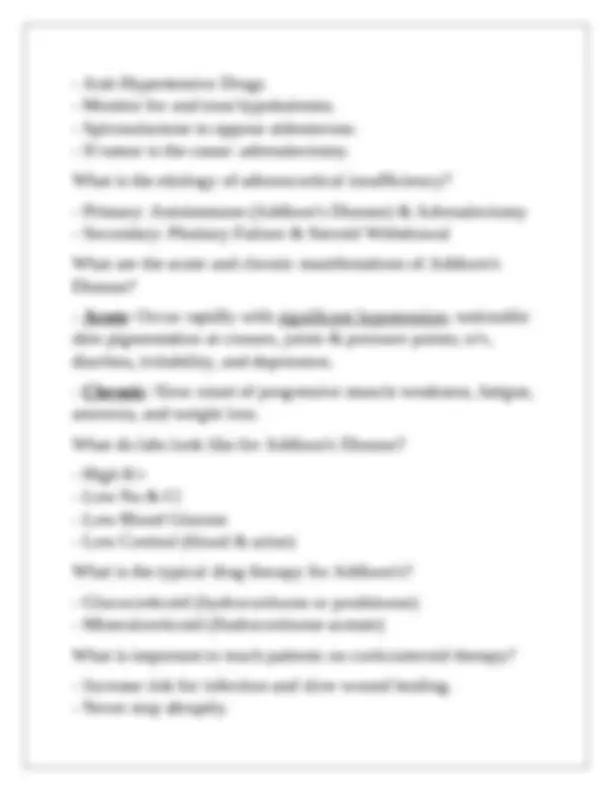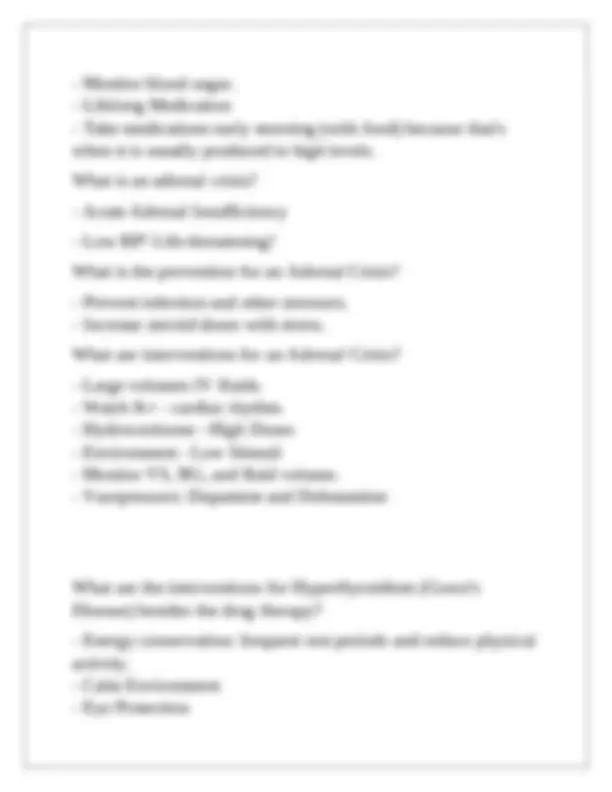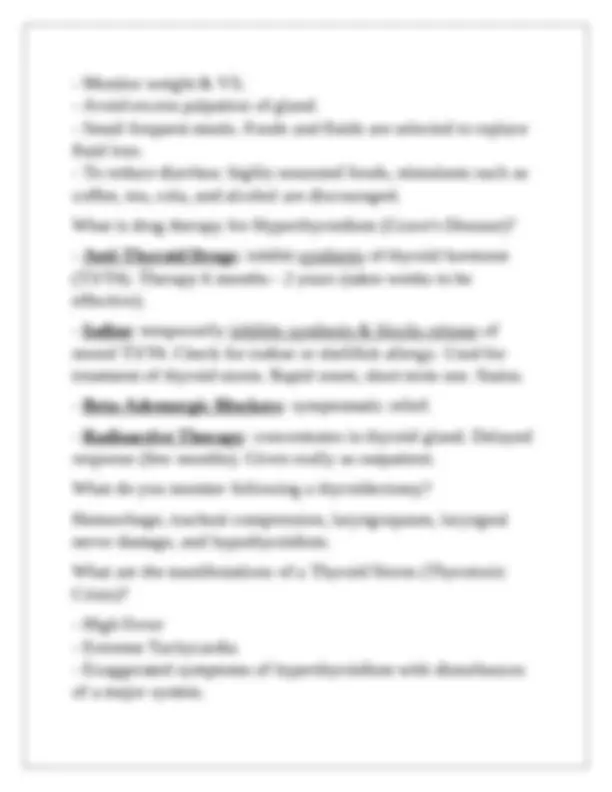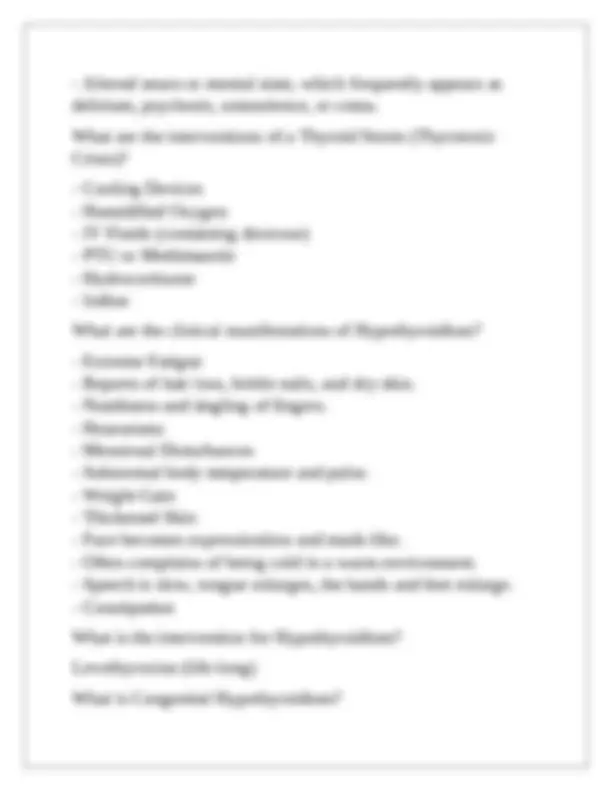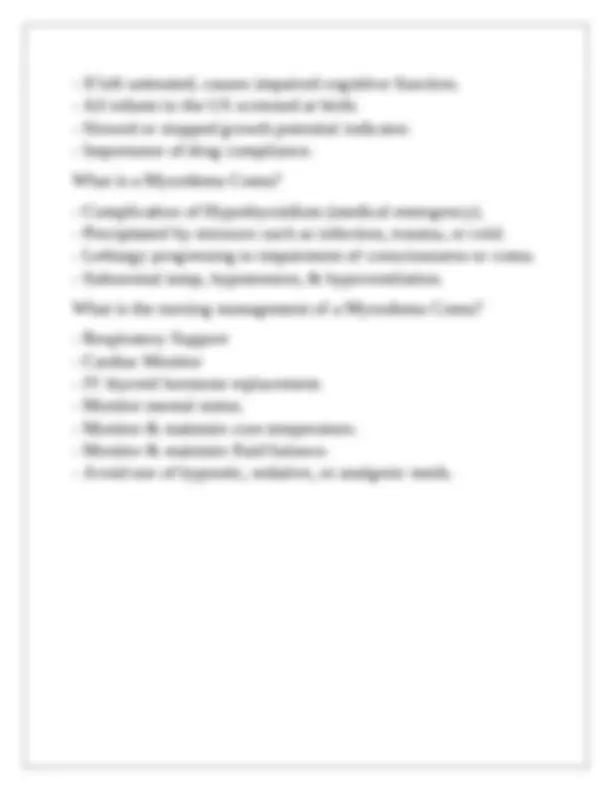Download NU 352 Exam Three Questions With Complete Solutions. and more Exams Nursing in PDF only on Docsity!
NU 352 Exam Three Questions With Complete Solutions A client enters the clinic for a work-up to rule out pheochromocytoma. For which manifesto would the nurse monitor? Select all that apply. A. Dry, Itchy Skin B. Diaphoresis C. Orthostatic Hypotension D. Headache E. Tachycardia B. Diaphoresis D. Headache E. Tachycardia A client is prescribed hydrocortisone replacement therapy. What teaching should be included in the discharge plan? Select all that apply. A. Watch for signs of low blood glucose. B. Take drug on empty stomach. C. Increase hydrocortisone dose with stress. D. Wear medic alert bracelet. E. Increase dietary protein and calcium. C. Increase hydrocortisone dose with stress. D. Wear medic alert bracelet. E. Increase dietary protein and calcium.
Blood glucose is more likely to increase and steroids should be taken in the morning to mimic normal diurnal rhythm of cortisol in the body. A client exhibits hypotension, nausea, weakness, and dehydration after a trans-sphenoidal hypophysectomy. Which problem does the client most likely have? A. High Blood Glucose B. Low Blood Calcium C. Low Cortisol Hormone D. High Thyroid Hormone C. Low Cortisol Hormone The pituitary may not be sending the ACTH to stimulate the adrenal cortex. What is pheochromocytoma? A tumor of the adrenal medulla. It is usually benign and produces and stores catecholamines (epinephrine & norepinephrine). What is the classic triad of symptoms that often accompanies the severe, episodic hypertension of pheochromocytoma?
- Severe Pounding Headache
- Tachycardia/Palpitations
- Profuse Diaphoresis
- IF Na is <125 with neuro s/s: — Restrict Fluid — Seizure & Fall Precautions — Monitor neuro status & labs. — Possibly 3% NaCl IV slowly. What are the interventions for Chronic SIADH?
- Restrict fluid to 800-1000 mL/day.
- Na & K+ supplements in diet especially if loop diuretics are used.
- Monitor weight & address thirst.
- Meds to block ADH effects (demeclocycline). What is Diabetes Insipidus (Posterior Pituitary Hypofunction)?
- Neurogenic (Central) DI : problem with ADH formation or release.
- Nephrogenic DI (less common): problem with the kidney response to ADH.
- Water Deprivation Test to confirm DI or discern Central vs Nephrogenic.
- Not enough ADH.
- Water lost from blood.
- Large amount of urine output.
- Hypernatremia What are interventions for Central DI?
- Fluid Replacement (oral fluids/IV fluids - D5W or 0.45% NaCl)
- Hormone Replacement (desmopressin acetate or vasopressin)
- Promote Safety
- Monitor labs, daily weight, and I&O.
- Good oral care (intense thirst).
- Hormone rx lifelong if chronic.
- Medic Alert
- Daily Weight
- Increase Fiber
- Watch for dehydration.
- Avoid Alcohol What should be a nurse's priority when admitting a client suspected with hyperaldosteronism? A. Preparing client for a CT scan. B. Administering medication for a headache. C. Monitoring the client to assess for cardiac dysrhythmias. D. Protecting the client from falls due to muscle weakness. C. Monitoring the client to assess for cardiac dysrhythmias. Hyperaldosteronism causes increased retention of sodium and water and more excretion of potassium. Hypokalemia could cause a dysrhythmias. Which nursing diagnoses should the nurse document in the plan for a client with Cushing’s Syndrome? Select all that apply. A. Fluid volume deficit related to failure of regulatory mechanisms.
- Nervousness
- Emotionally hyper-excitable, irritable, and apprehensive.
- They can't sit quietly.
- They suffer from palpitations.
- Their pulse is abnormally rapid at rest as well as on exertion.
- They tolerate heat poorly and perspire frequently.
- The skin is flushed.
- Exophthalmos
- Increased appetite and dietary intake, weight loss, fatiguability, weakness, amenorrhea, and changes in bowel function.
- Tachycardia What is general nutrition information for those with diabetes?
- No type of food prohibited emphasize nutrient dense foods.
- No “diabetic” food required; avoid sugar sweetened drinks.
- Assess current nutrition patterns/preferences.
- CHO: priority given to total amount of CHO.
- Alcohol: can cause severe hypoglycemia when patient takes insulin or oral hypoglycemic drugs. Glucagon will NOT be effective to treat the hypoglycemia. What is important to teach with carbohydrate (CHO) counting (includes starches, sugars, & fiber)? Teach to count total grams of CHO at each meal/snack. Timing of intake and insulin dosing will change with number of grams of CHO.
What is the Consistent CHO Counting Plan (often for Type 2)? Each meal has consistent number of CHO grams each day. What is the Flexible CHO Counting Plan (more commonly used for Type 1)? All meals and snacks vary in grams of CHO and insulin is adjusted accordingly. What is important to teach about snacks with those with diabetes?
- May be recommended for people taking immediate/fast acting insulin.
- Not needed for long-acting basal insulin.
- May be recommended for children/teens.
- Rapid-acting insulin for snack and meals = standard of care with intensive therapy. What are the sick day rules for those with diabetes?
- Check BG every 3-4 hours.
- Consume CHO in form tolerated.
- Increase fluid intake.
- Take usual dose of meds including insulin unless directed otherwise!!!
- Check urine or blood for ketones.
- Call HCP: if cannot keep food/fluids down, moderate-large amount of ketones in urine, BG>300, temperature >101, or fruity odor breath.
What are the different Rapid-Acting Insulins? What is their peak time?
- Peak 30-60 minutes (preferred, especially for Type 1).
- Administer 5-15 minutes before a meal or immediately after.
- Lispro
- Aspart
- Glulisine = fastest of this rapid group; may give before or within 20 minutes after meal. What is the peak time or Short-Acting Insulin?
- Peak 2-3 hours.
- Administer 30 minutes before a meal.
- Regular insulin: used most commonly for IV route. What is the peak time for Intermediate-Acting insulin?
- Peak 4-12 hours.
- NPH What is the peak time of Long-Acting Insulin? What are the different types?
- No significant peak (do not mix with other insulins!!!!).
- Glargine
- Levemir
- Degludec What is the Total Daily Insulin Dose? 0.5 units/kg/day What is the Basal Insulin dose?
Approximately 50% of Total Daily Insulin Dose What is a Continuous Subcutaneous Insulin Infusion (Insulin Pump)?
- Continuous infusion of rapid acting insulin is the basal insulin in pump.
- Bolus doses given for food intake and to correct high blood glucose.
- If tubing occludes, DKA could occur! What is the management of subcutaneous insulin pumps in the hospital?
- Patients self-manage if they have physical and mental capacity to do so. Follow hospital policies. If unable to manage own pump, the pump is removed.
- Nurses document basal and bolus but do not manage pump!
- In pediatrics a parent/guardian may operate if they’ve been doing so at home.
- DKA: pump is generally removed. What does self-care look like based upon developmental level (infants, school-age, & adolescents)?
- Infants to Early School Age: parents/adults provide care.
- School-Age (8-11 years): child assumes more daily tasks (food proportions, reading labels, BG testing, & injections with supervision).
- Adolescents: still need help with decision making about insulin
- Strict I & O
- Monitor lab results. How do you correct imbalances and acidosis?
- Administer IV fluids first. Usually with 0.9 NS initially.
- IF K+ is low, correct hypokalemia before insulin is initiated.
- Administer insulin approximately 1 hour after starting fluid replacement.
- Add KCL &/or K-Phos to IV fluids when serum K+ <5-5.5.
- Add 5-10% dextrose to IV solution after BG gets down to approximately 200-. What is the treatment for cerebral edema?
- Increase HOB
- Osmotherapy = 1st line therapy (hypertonic saline or IV mannitol). What is included in a psychosocial assessment before surgery?
- Support Systems
- Potential effects on body image and lifestyle.
- Past Experiences
- Anxieties
- Learning Needs Who is at an increased risk for post-op complications? Elderly Clients
What needs to be reviewed for cardiovascular health prior to surgery? HTN, HF, MI, bleeding or blood clots. Complete ECG, PT/INR, PTT, and anti-Xa as needed. What needs to be reviewed for respiratory health prior to surgery?
- Acute or chronic respiratory illnesses.
- Smoking History
- Chest X-Ray may need to be done. What needs to be reviewed for neuro health prior to surgery?
- Orientation, cognition, hearing, and vision.
- Baseline important, especially for elderly.
- History of CVA, dementia, etc. What needs to be reviewed for GU health prior to surgery?
- Kidney or Urinary Issues
- UA, GFR, BUN, & creatinine may be ordered. What needs to be reviewed for endocrine health prior to surgery?
- Diabetes (need BG levels before surgery)
- Thyroid or other endocrine disorders. What medications should be reviewed prior to surgery? Tranquilizers/sedatives, anti-hypertensives, insulin (or other hypoglycemics), anti-coagulants (Warfarin), anti-platelets, herbal & dietary supplements, corticosteroids, and alcohol.
What are the three conditions for valid consent?
- Adequate disclosure of diagnosis, treatment, risks, probability of success, benefits, alternatives, & prognosis without treatment.
- Pt demonstrate clear understanding before any sedating meds.
- Pt gives consent voluntarily. What is important to know for informed consent?
- Physician/surgeon is responsible for explaining & obtaining consent.
- Nurse may witness the signature on consent form & can verify patient understanding & reinforce the information already provided by physician but can't provide info initially.
- Patient may withdraw consent at any time.
- Nurse must notify surgeon if patient has questions/concerns about proceeding with the surgery.
- A true emergency may override need to obtain informed consent. What is the purpose of Universal Protocol and it's 3 components?
- Purpose: eliminate wrong-person, wrong-procedure, & wrong- site events.
- Pre-Procedure Verification
- Site Marking
- Time-Out What is the role/responsibilities of the circulating nurse?
- Not scrubbed & no sterile gown/gloves.
- Monitor sterile technique and patient safety. Keep family
informed. Keep patient warm.
- Patient Advocate
- Prepare OR Suite
- Emotional Support
- Physical Positioning
- Ensure correct sponge count. What is the role/responsibilities of the scrub nurse or tech?
- Sterile attire in sterile field.
- Hand Instruments
- Assist with Suction What is general anesthesia? IV induction and then inhalation agent. What is monitored anesthesia care?
- Usually IV Only
- Anesthesia care provider required for possible airway management. What is moderate sedation?
- IV
- May be administered by RN under direct supervision of physician. What is local/regional anesthesia?
- Local anesthetic = "-caine"
- TAP: Transverse Abdominus Plane (nerve block)
- Spinal: sensory, autonomic & motor block. What is epidural anesthesia/analgesia?
- Call emergency/stop surgery/remove inhalant & use other agents for sedation/analgesia.
- Administer IV Dantrolene
- May need iced IV saline & cooling blanket. What is the criteria for discharge from PACU after anesthesia?
- Aldrete Score 8-
- Stable VS
- No Bleeding
- Return of Reflexes (gag, cough, & swallow)
- Minimal to moderate wound drainage.
- Urine output of at least 30 mL/hr. What is involved in respiratory care following surgery?
- Lateral Recovery Position
- Fever during first 24-72 hours - respiratory source!
- ETCO2 Monitoring
- Pulmonary Toileting
- Reversal Agent What is involved in cardiovascular care following surgery?
- Monitor VS Frequently
- Hypotension: — Apply O2 if low O2 sat. — Check incision for bleeding. — IVF bolus (0.9% or LR) — Vasoconstrictive Drugs — Shock Position
- Hypertension: treat cause of pain, too cold, urinary
retention...give HTN meds PRN.
- Syncope/Fainting: assess orthostatic BP. Hydrate, fall precautions, rise slowly, & assist with ambulating. What is involved in neurological/psychological care following surgery?
- Hypoxemia: #1 cause of post-op agitation.
- Emergency delirium/post-op delirium - safety measures!
- Secure airway & lines, side rails, close monitoring. What can be done for infection prevention throughout the surgical process?
- Skin cleansing pre-op.
- Prophylactic anti-microbial: usually 30-60 min.
- NO prophylactic anti-microbial post-op.
- Maintain Normothermia
- Keep blood glucose <200 with or without diabetes.
- Remove urinary catheter.
- Do NOT shave hair at site (may clip). What is involved in the GI care following surgery?
- N/V = most common.
- Monitor bowel sounds & flatus & assess for distention.
- Anti-Emetic Meds
- Constipation: prevent with stool softeners when taking narcotic meds. What interventions are done for post-op ileus?
- NPO & NG Decompression

